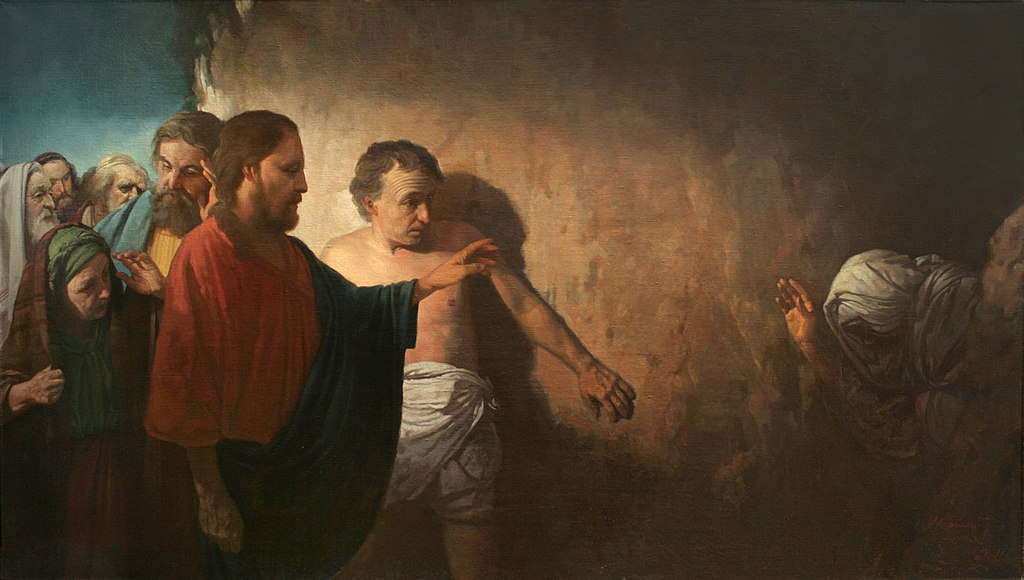“Love is…” Fill in the blank. There are lots of different ways we could describe love. Our culture offers an entire palette of them to choose from. “Love” seems to me to refer mainly to heavily subjective feelings and states of mind. That is, love is seen first and foremost as a feeling experienced within a person. While I don’t want to downplay or denigrate the reality of a feeling or an array of feelings which we unobjectionably call “love,” the biblical witness requires us to dig deeper. A key reality often lost in contemporary notions is this: love is loyal.
Translation troubles: Hesed
Working through the book of Ruth, we encounter an important Hebrew word at three junctures: Ruth 1.8, 2.20, and 3.10. This word is hesed. In general, I try to avoid talking about Hebrew and Greek in non-academic contexts. I find them very interesting and have devoted a great deal of time and effort to understanding them. However, the role of talking about Hebrew and Greek is primarily the role of a scholar. Scholars have done great labor in the languages, culture, and history, so that we can read the Bible and study it in English without having to learn the original languages. That is a blessing of immense proportions!
There is nothing spiritual or esoteric about using this Hebrew word hesed. It just happens to be the case that there is no consistently good way to translate the word into English. It is complex word. Regular translations include “love,” “kindness”, “loving-kindness,” “mercy,” “loyal love,” and so forth.
The fundamental difficulty with rendering hesed into English is that it traffics in a different understanding of “love” and “kindness” than we usually use. Consider these verses from Psalm 136 (the repeated refrain throughout the psalm uses this word hesed):
1 Give thanks to the LORD, for he is good. His love endures forever.
This one is easy. We can square enduring love with goodness. But as the Psalm continues, we run into problems with using “love.” Consider a few different acts of God which are also attributed as examples of “his hesed endures forever”:
10 to him who struck down the firstborn of Egypt—His love endures forever.
15 [he] swept Pharaoh and his army into the Red Sea—His love endures forever.
18 [he] killed mighty kings—His love endures forever.
These are a little harder to fit into our idea of love and mercy. How does God killing people fit into his “loving-kindness”?
Love is…loyal
Throughout this entire Pslam it is God’s hesed that is under view. It quickly becomes clear that hesed is concerned with something which goes beyond our normal usage of the terms “love” and “mercy.” One scholar puts it this way:
“Hesed, however, describes a mutual relationship between man and man or between man and God. Translating it as “mercy,” “compassion,” or “love” destroys the concept of mutuality.”
Harold Kamsler, “Hesed – Mercy or Loyalty?”
This scholar highlights a tendency in our cultural context of understanding love and mercy as one-way actions: I love, she shows mercy, he is full of loving-kindness. Hesed, by contrast, has a strong notion of inter-connectedness. A strong notion of loyalty. A strong notion of relational obligations.
Here is an expansive definition:
“Hesed expresses, essentially, faithfulness and loyal conduct within the context of a relationship; it is an inward commitment and disposition of goodwill together with its outward expression in dutiful and compassionate action. The precise nature of that action depends upon the context, the relationship and also upon the relative positions and abilities of parties within that relationship.”
Robin Routledge, “Hesed as Obligation: A Re-Examination”
That’s a mouthful. But helpful.
My personal favorite quick and easy way to try to represent this is “loyal love,” but even that is not entirely satisfying.
The duty of love
What does duty have to do with love?
We might put it this way: love (in this hesed sense) is bounded within certain limits. This is not a bad thing. I love my family, for instance. I don’t love anyone in Kazakhstan. Not that I am opposed to anyone in Kazakhstan. I’m sure there are many nice people there who I could learn to love. But I have no connection, no commitment to anyone there. I can love them only in a very abstract sense of general benevolence. But I go home and sit with my wife and kids and we eat together, play together, fight together, laugh together, and all those things. We have a commitment to one another and within the boundaries of the commitment, love of a deep and profound kind flows.
The difference is that there is no relational commitment in my general benevolence towards people in Kazakhstan, but there is commitment undergirding our family relationships. Within my family, hesed exists and flows out in acts of care and concern for each other. The relational context is the matrix in which loyal-love has existence. A relationship is like the boundary lines within which hesed is possible.
God’s Hesed
This notion of hesed is important in Scripture. God is a God of love, yet it is a bounded love. Not bounded in the sense of limited, as though God ever runs out of love to give but bounded in the sense of it covers a certain area, if you will. Those outside of that “area” experience God’s general benevolence—“he causes the rain to fall on the just and unjust”—but not the deep and profound love, the hesed. That love flows within the bounds of relationship: his covenant, his people, those who have come to “live in the area of God’s love,” as it were. And within the bounds of this love, God’s love is not only a good thing, but a duty, a loyal thing. God fully commits himself to those who are within this “area.”
The Bible calls this “area” of God’s love many things: the kingdom of God, salvation, eternal life, being in Christ. What unites them is the undergirding reality that God fully and freely commits himself to any and all who come into this area of his love. And he commits to being for them and not against them, to be the giver of joy, to fill up their hopes…and all these things even when they fail to be as they should.
God holds up his loyal love
That last sentence is important. God remains faithful to his hesed, his covenant love, even when we don’t. That is part of why it is so important to keep a sense of duty and loyalty in our notion of love. Even when people in my family make me angry, or I make them angry, we continue in love. Not because we necessarily are happy with each other at the moment. But because we have loyal-love, dutiful love, love which finds its strength and existence in our relationship rather than in the transient nature of our feelings at the time.
The gold standard of this kind of hesed, loyal-love, is God reaching out to humanity in various promises (covenants). In these promises, God makes a commitment to humanity. The commitment sets the boundaries in which hesed exists. Those who enter in get to receive the endless bounty of God’s loyal-love…even when we fail to be loyal. Why? Because God’s loyalty to his commitments never runs out. While anger and frustration are not foreign to God in his dealings with humanity, he does not cease to be full of loyal-love.
This calls for praise! Praise God that his love is loyal to the end.
This calls for emulation: “Therefore be imitators of God, as beloved children. And walk in love, as Christ loved us and gave himself up for us” (Ephesian 5.1-2).





